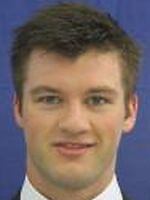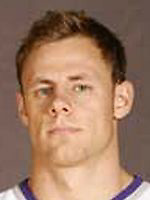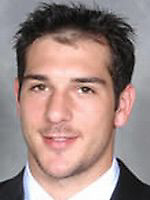The Minnesota Boys’ Hockey State Tournament has long been regarded as one of the top prep tournaments in the country. The girls’ tourney, first conducted by the Minnesota State High School League in 1995 and moved to St. Paul’s Xcel Energy Center in 2006, is still evolving.
Edina High School head coach Laura Slominski has a unique perspective on the state tournament. She competed in it as a player during her career at Burnsville High School, culminating in her winning the Ms. Hockey award as the state’s top senior in 1998, scouted it while an assistant coach at St. Cloud State and Minnesota, and has now led her Hornets to three straight tournament appearances.
“I think that it’s been fun to see the progression of the state tournament,” said Slominski. “Back when I played in it, there were only four teams, and rightfully so, because there were probably only four quality teams. One of the big changes has been that they’ve gone to the two classes and eight teams in each.”
Edina and Slominski opened the Class AA tournament against a Rosemount team coached by Tracy (Engstrom) Cassano.
“What a small world, right?” Slominski said. “We played together for four years at the U of M and had so many great memories together. We were even roommates for a while.”
As intriguing as coaching match-ups may be, it is the players that fans turn out to see. The first girls’ quarterfinal round I witnessed 11 years ago featured Krissy Wendell and Natalie Darwitz in successive games. While participants in this year’s tournament may not be months away from centralizing with the U.S. national team as those two were, there is no shortage of future college talent. Among the 16 rosters are 20 players who have committed to Division I college programs.
Rosemount featured forwards Allison Micheletti (Providence) and Rachael Kelly (Bemidji State), while Edina countered with defenseman Greer Vogl (Vermont) and forwards Sami Reber (Harvard) and Christie Brauer (Connecticut).
“One big strength we have coming into the tournament is two-thirds of our team has been here at least once, and one-third has been here twice,” Slominski said before the game. “I think the experience is huge, and hopefully we can take advantage of that early on and get on them right away so that their excitement doesn’t outweigh our experience.”
She proved prophetic, as Edina, seeded second in the eight-team bracket, jumped to an early lead on their way to a 6-0 victory.
“We have a lot of younger girls; none of us have ever been here in this situation before,” Micheletti said. “Some people might have been a little star-struck by the big ice, all the people that were there. And what we really needed to do was come out flying like we can.”
“Being a senior and our third trip back here, all everyone has ever dreamed about is to win a high school state championship as a high school player,” Reber said.
Similar plots played out throughout the first round of AA action. Sometimes, the less-experienced team triumphed. Usually, the team with greater depth of talent won. The one upset in the bracket occurred in the second game, when unseeded Hill-Murray knocked off the No. 3 seed, Lakeville South.
Lakeville forward Morgan Fritz-Ward and goaltender Chelsea Laden have signed with Quinnipiac University. Perry Wilkinson, their coach, says the success of the college-bound pair has had an impact on other players.
“They pick up their habits and realize how hard they work,” he said. “They get to talk to them about what they do off-ice and how they focus mentally. I just think when you have that type of talent around everyone else, it makes them decide either yes, I want to work that hard and be that good, or I’m content being the varsity third-liner.”
Hill-Murray captain Hannah Brandt starred for the U.S. U-18 team at the World Championships in January, including a four-point effort in the gold-medal victory over Canada. The junior has verbally committed to Minnesota.
“Hannah was pretty excited to get that out of the way,” said Hill-Murray coach Bill Schafhauser. “To be a player at the ‘U’ for her was a big dream. It does take a lot of the constant contact from coaches and scouts and things like that, and kind of puts it on the backburner, and she can just focus on being a kid and a high school player and enjoying the time she has with us.”
When Lakeville South scored the game’s first goal on a power play, her line stormed back on the next shift and got the equalizer. Brandt took over in the second period, scoring on an unassisted breakaway and assisting twice as Hill-Murray built a 4-1 lead and held on to win 4-3.
“She’s a ridiculously good player,” Wilkinson said. “She anticipated a lot of the things that our ‘D’ were going to do before they had done it.”
In the evening session, the top seed Minnetonka Skippers shut down the Elks of Elk River/Zimmerman, 3-0. Elks star forward Jonna Curtis (New Hampshire) didn’t recall being stopped as effectively.
“Right when you get the puck, they’re on you right away,” Curtis said. “They just didn’t let you get to the net, so it’s kind of hard to score.”
Minnetonka, the state’s top-ranked team throughout the season, features seniors Julie Friend and defenseman Rachel Ramsey. Friend, named Minnesota’s top senior goalie by Let’s Play Hockey magazine, will attend St. Cloud State next season. Ramsey, daughter of Miracle on Ice and NHL defenseman Mike Ramsey, has signed with her father’s alma mater, Minnesota.
“These two have been outstanding and gotten better every year since their freshman year,” said Minnetonka coach Eric Johnson. “Rachel is just a fantastic player. She has 176 points and our next highest scorer in school history has 88, and she’s played defense half her career. That just says the impact that she’s had on our program. It’s been great for our youth players to come out and see her and want to aspire to play like her someday.”
“Julie Friend in nets has been outstanding. I think her stats speak for themselves. She’s just a mature leader who’s fun to be around for the teammates and takes younger kids under her wing. When she gets out on the ice, she’s very focused. I think she’s got all the tools that a good goaltender needs.”
When asked after the game what impressed him about the Skippers, Elks coach Joe Heasley’s response was, “Everything.”
“Offensively, defensively, neutral zone, goaltender — they’re solid up and down,” he said. “They’re going to be tough to beat.”
In the last AA quarterfinal, future Gopher Rachael Bona put on a show, scoring four goals as her Coon Rapids Cardinals defeated North Wright County, 6-1.
“She just sets the pace for our whole team,” Cardinals coach Jessica Christopherson said. “Our kids really feed off of her energy out there. The trick for Rachael each game is to figure out what they’re going to give her.”
In Friday’s AA semifinals, Edina and Minnetonka advanced by not giving much to the top threats of Hill-Murray and Coon Rapids respectively. The two favorites focused their attention on Brandt and Bona, using physical play and sheer numbers to limit the smaller players. Reber had both goals for Edina in their 2-0 win over Hill-Murray, while Minnetonka moved past Coon Rapids, 4-1, on the strength of a pair of goals each by seniors Paige Baldwin and Carolyn Draayer.
The championship game many had expected, No. 2 Edina versus No. 1 Minnetonka, did not disappoint. The teams exchanged a pair of early goals each way. At 2-2 late, the game appeared destined for overtime until Minnetonka sophomore Amy Peterson scored her second goal of the game with under 40 seconds to play. Peterson showed incredible poise, corralling a loose puck and waiting for the goaltender to commit before zipping a shot under the crossbar as she was being tackled from behind.
Though the play made Edina the AA runner-up for the second straight season, it was no doubt something the former college scout in Slominski could appreciate.
“This is a high-pressure situation for these kids, and you’re putting some of the best kids in the state up against each other in those key moments,” Slominski said earlier. “As a college coach, you want to know who is going to perform for you down the line. There are a lot of great players who sometimes in the big games don’t show up. I think this tournament, a) if you’re able to make it here, you’ve proven that you’re the type of player and leader that can lead your team to great things, and b) how you play here shows how you can do under the big lights and with some additional circumstances that in a normal high school hockey game you’re not dealing with. To see how kids adapt to that, if they can still play at their highest level, I think that says a lot about them and how they prepare for games.”
When selecting a college and dealing with recruitment, it is invaluable to have coaches and teammates that understand the process.
“Having been through the recruiting process as a player, I know their side of it,” Slominski said. “And having been at the coaching level and having recruited, I know the other side, because I think that’s the piece that a lot of kids miss out on sometimes, is not really knowing when they get an e-mail, what does that mean. I think that because we’ve had some kids over the past couple of years experience the recruiting and the Division I status, our kids who are younger have seen that progress.”
In the small school Class A tournament, many of the games were one-sided. The four-time state champion South St. Paul Packers provided most of the drama, defeating second-seeded Breck in a 1-0 nail-biter, and then carrying a 1-0 lead into the third period of the championship against defending champ and powerhouse Warroad before falling under the Warriors offensive might by a 5-1 score.
Packers coach Dave Palmquist has taken teams to state a record 11 times and acknowledges that it would be desirable to improve the competitiveness of the Class A field, where several top teams collided in section play.
“I don’t think the State High School League always wants to get the best teams here,” Palmquist said. “They’re trying to get a wide variety of teams here and give more kids an opportunity. But if they could be a little more open minded to looking at some different options to getting some of the better teams here, that would be great.”
Warroad’s roster features five players committed to D-I programs, including four headed to North Dakota: senior goalie Shelby Amsley-Benzie, senior forward Layla Marvin, and sophomore forwards Lisa Marvin and Kayla Gardner. The newly-named Ms. Hockey in Minnesota, forward Karley Sylvester, has signed with Wisconsin. According to coach David Marvin, her Sioux-bound teammates don’t give her any ribbing about her college choice.
“I think they’re all happy for Karley,” he said. “She’s excited about going to Wisconsin, and who wouldn’t be, to play for Coach (Mark) Johnson and with their program. When you leave high school, a lot of people go their separate ways for a while.”
Advancing to the state tournament brings added exposure to players, particularly those interested in attending a college outside the Midwest, such as Breck forward Kayla Mork (New Hampshire).
“Sometimes coaches can run out here (during the regular season); they’re busy with their seasons, too,” Mork said. “I think it’s nice having all of the good teams here, so they can watch a bunch of players and young ones coming up, too.”
Young ones like Peterson, who showed up under the brightest of lights.


